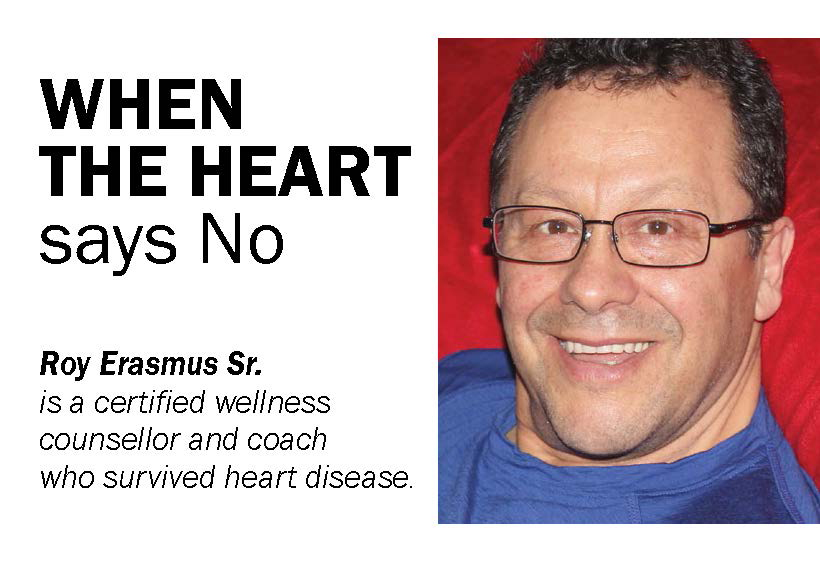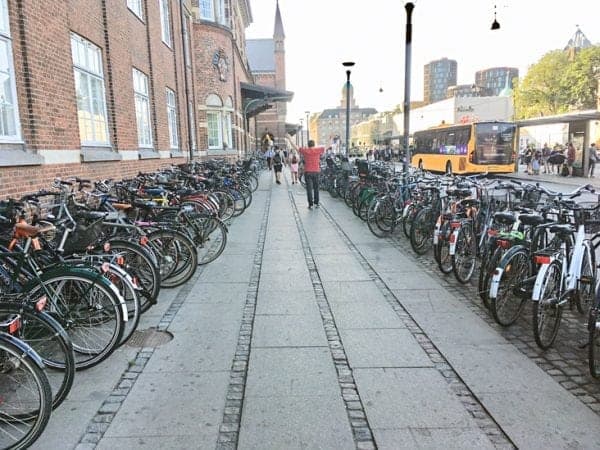One of the first things we noticed in Copenhagen was all the people on bikes. Not hundreds, but thousands of them constantly whizzing back and forth. And bike lanes all over. In fact, we had to watch out for the bikes more than the cars. Eschia!
Yes, we were pleasantly surprised to see so many people on bikes. And there are parking lots all over for them, each with hundreds of parked bikes. And I don’t mean fancy 12 and 16 speeds like here. Most bikes seemed to only have around five speeds and many only have one gear, called a “fixie” because of the fixed gear.
 We saw all kinds of people commuting. From young kids to people with white hair. And they were obviously from all walks of life because they were in suits, shorts, dresses, uniforms, and hardhats. Ever good!
We saw all kinds of people commuting. From young kids to people with white hair. And they were obviously from all walks of life because they were in suits, shorts, dresses, uniforms, and hardhats. Ever good!
And all kinds of bikes. Most of them have baskets in the front or back, or both. Then there are “Cargo bikes”, with two wheels in the front. They’re used to transport all kinds of things in different sized cargo holders in the front of the bike.
Apparently, kids, drunken teenagers, dogs, and furniture are all commonly transported in cargo holders. We saw a man holding a baby being transported by a woman. Woohoo!
We didn’t know if it was a result of all the people on bikes, but we hardly saw any overweight people or people smoking – and they may have been tourists like us. LOL.
Bike heaven?
Apparently over a million Danes use their bikes for daily transport, and Copenhagen got its first bike lane in 1910. Can you imagine? Bike lanes since 1910. Very cool. And some people are complaining because the City of Yellowknife is trying to put bike lanes in place – not cool, man.

Today 50% of Copenhageners commute by bike every day. Most of them do it all year round, in rain and snow. Woohoo!
That’s because cycling allows them to interact with their environment and it results in good health. For example, cycling reduces the risk of serious conditions such as heart disease, high blood pressure, obesity and the most common form of diabetes. Yay.
Copenhagen helped develop this bike culture by creating close to 400 kilometres of bike lanes, mostly with curbs separating them from car lanes. They also adjusted the traffic lights to favour cyclists on many main roads. This means cyclists travelling at 20 km/h hardly have to stop because they can hit green traffic light after green light. This probably makes our cyclists green with envy. How sick.
And all those bike lanes meant we saw no bikes on the sidewalks. Whoa!
As a result, Denmark can boast about huge savings in health costs through less hospitalization and less work missed due to sickness. This is a good incentive for them to promote the bicycle as the preferred mode of transportation – even for children.
You could say Danes see cycling as a basic skill like walking and talking. By the time they start school, most Danish children can cycle good enough to keep their balance and steer a straight line. And, why not? I remember how hard it was to keep me off of a bike once I started to learn how to ride. Well yaaaaa.
Schools teach the kids about traffic rules and road safety. They also participate in the Danish Cyclists Federation very successful campaigns to support good cycling habits.
The Federation works at getting more people to cycle. For instance, their four national cycling campaigns have more than 250,000 participants every year. Last year, the “Bike to School” campaign got over 5,000 new kids on the bicycle lanes.
Our cab driver said they even provide lunches once a month for commuters. Now you’re talking.
The federation also helps create better traffic safety for cyclists. For example, the number of right-turn accidents dropped substantially as a result of a broad collaboration between the federation and various national organizations. Very cool.
The Danish government knows a good thing when it sees it. In 2009 they started a $200-million Cycle Fund, which contributes up to 40 per cent of costs for projects that can improve conditions for cyclists. Be sure to tell MLAs and our MP about this, as our governments should be helping municipalities with things like bike lanes.
As a result of all of this, last year Copenhagen was voted the “Best city for cyclists” and it is now officially the first Bike City in the World. Happy cycling.